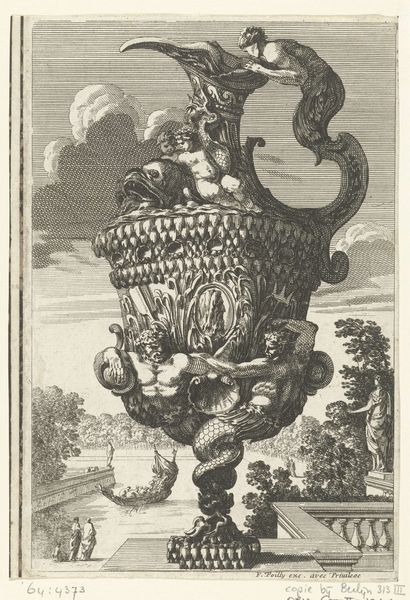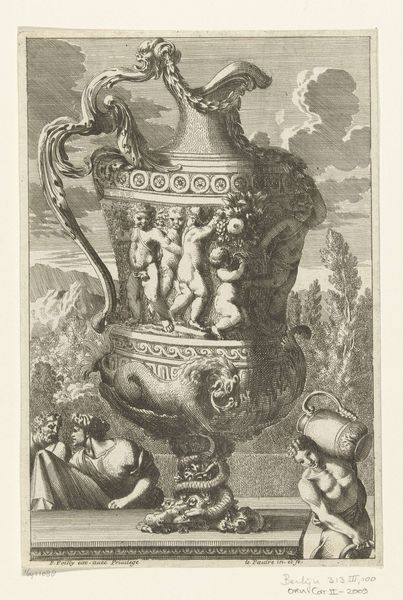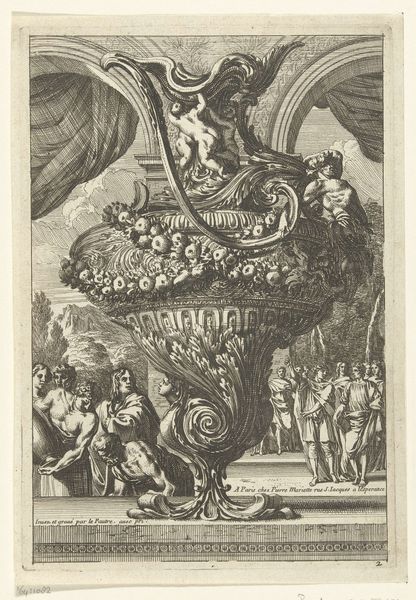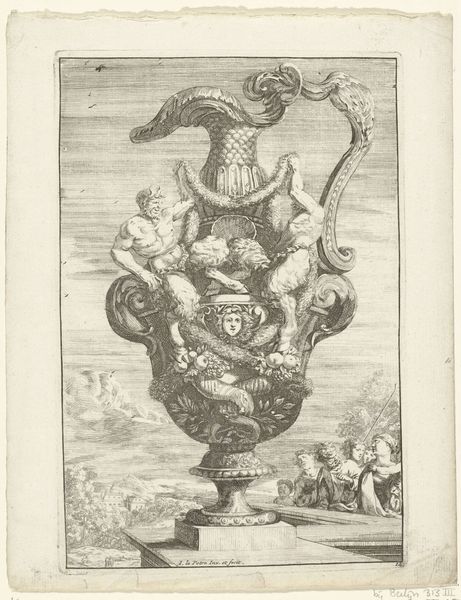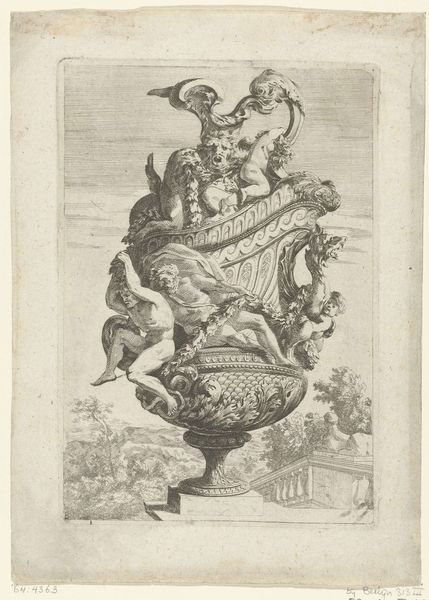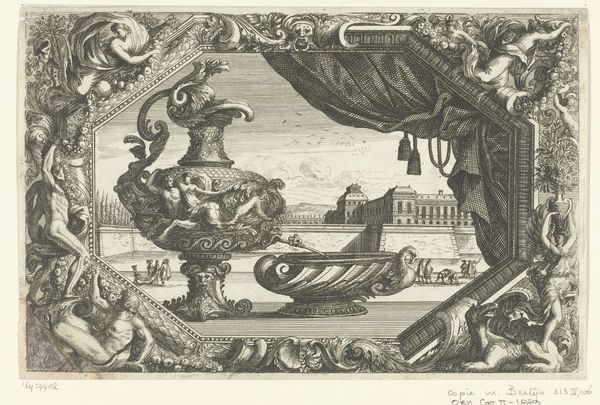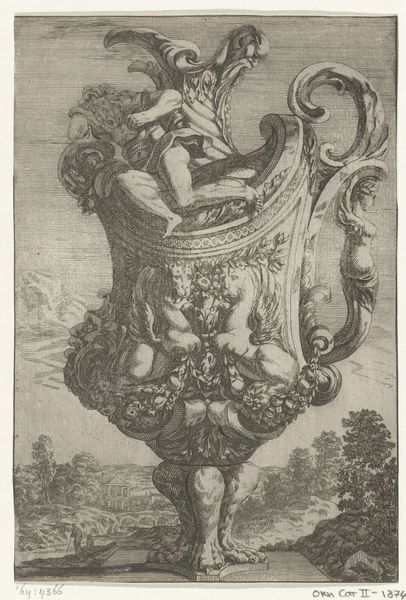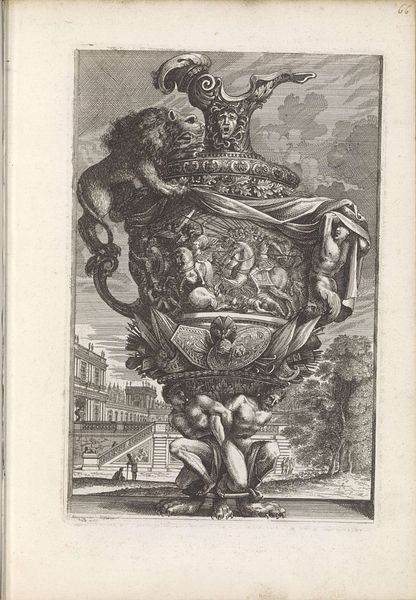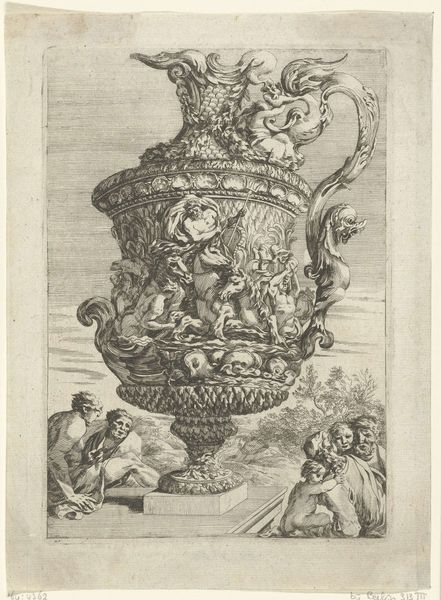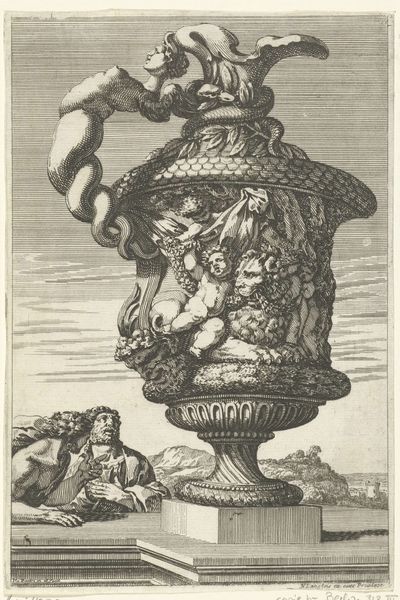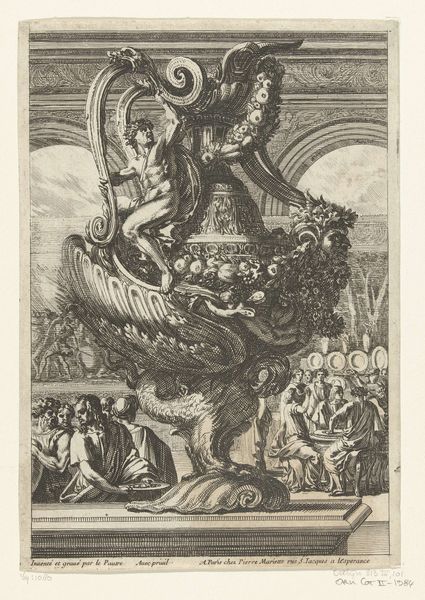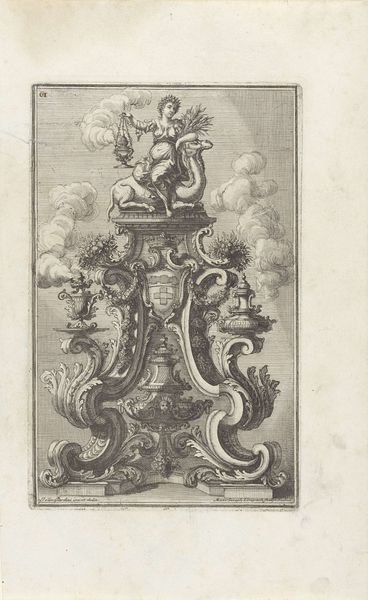
etching
#
allegory
#
baroque
#
etching
Dimensions: height 193 mm, width 130 mm
Copyright: Rijks Museum: Open Domain
Editor: Here we have an etching of a *Schenkkan met twee figuren van Neptunus*—a ewer with two figures of Neptune—dated sometime between 1628 and 1732. It's an anonymous piece, here in the Rijksmuseum. It has a sort of weighty, almost overwhelming feel to it... all the detail makes it hard to know where to look first! What do you make of this image? Curator: Oh, isn't it marvelous? It’s almost comically baroque in its abundance. What strikes me most is the dialogue between power and vulnerability played out in Neptune's dual representation. We have him, strong and virile at the base, supporting all this weight. Then, we glimpse him again, miniaturized in a panel, almost like a memory, surrounded by delicate flora. A real push-pull, wouldn’t you say? Editor: Absolutely! I didn't notice that smaller depiction before. Is this ewer meant to be symbolic? Curator: Without a doubt. Baroque art often served to showcase wealth and sophistication. It might have been used in allegorical plays, pageants, or some elaborate courtly entertainment. Look closely – can you see how the artist contrasts the smooth skin of the cherubic figures at the top with the craggy texture of the vase itself? Editor: Yes! The sharp lines of the vase seem to give the image some movement and fluidity, even for an etching. Curator: It does, doesn't it? It's like water made metal. The overall composition certainly hints at themes of abundance, dominance over nature, even perhaps the deceptive and ever-shifting nature of power itself. And how different from what we are used to drinking out of, eh? Editor: Fascinating. I see this ewer completely differently now! Curator: That's the joy of looking, isn’t it? Discovering a new layer, a new perspective with each viewing. The past is endlessly inventive; how lucky are we to enjoy such treasures today.
Comments
No comments
Be the first to comment and join the conversation on the ultimate creative platform.
